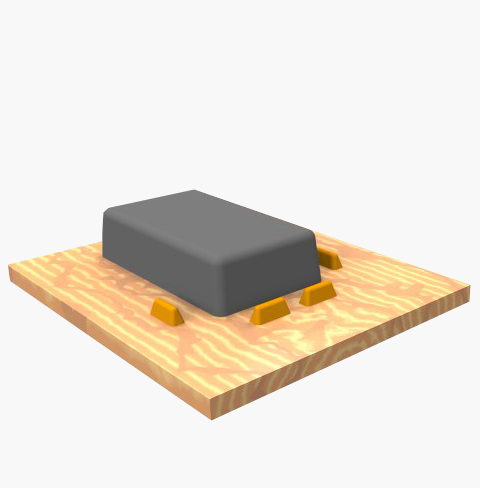Material webbing when vacuum forming is essentially the unwanted wrinkles that appear in your mold when the vacuum is applied and the plastic is stretched in a way you didn’t plan. It occurs when you cannot sufficiently control the flow of the heated sheet as the tool is raised into the sheet.
[one_half valign=”top” animation=”none”]

[/one_half]
[one_half_last valign=”top” animation=”none”]
One way to identify possible problems you might encounter is to envision draping a cloth over your tool (instead of a plastic sheet). The folds and pleats you see represent potential problems, or wrinkles.
The most common vacuum forming problems we come across include:
- Mold or tool is too high in relation to its base area
- Sharp vertical corners with minimal draught angles
- Deep male molds in close proximity to each other
- Too much material for the job
[/one_half_last]
Formech offers several tips to help combat these problems:
- Use a smaller sheet size so that the mold/tool stretches the material more
- Place angled blocks around the corners to use up the excess material.
- Fix wires or steel blades to the clamping frame to restrict the sheet movement as the tool/mold is raised into the sheet
- Add draught angle/radius corners to allow the material to flow over the tool/mold/pattern
- A frame attached to the plug assist that comes down as the table is raised helps to force the material down between the tools and reduce webbing
- Try using a female tool instead of a male tool if webbing occurs between parts of the tool
- Slow vacuum down to gently introduce the vacuum to reduce the chance of webbing
- Increase tool height/add 45 degree apron to tool base to use up excess material that cause webs
For detailed illustrations of each solution and detailed advice, read more from Formech.




1 Comment
xhstwr.com
Vacuum forming is also appropriate for transparent materials such as acrylic, which are widely used in applications for aerospace such as passenger cabin window canopies for military fixed wing aircraft and compartments for rotary wing aircraft.